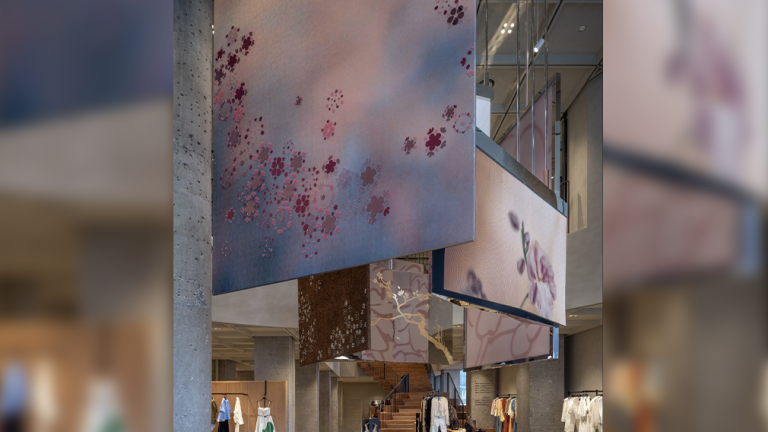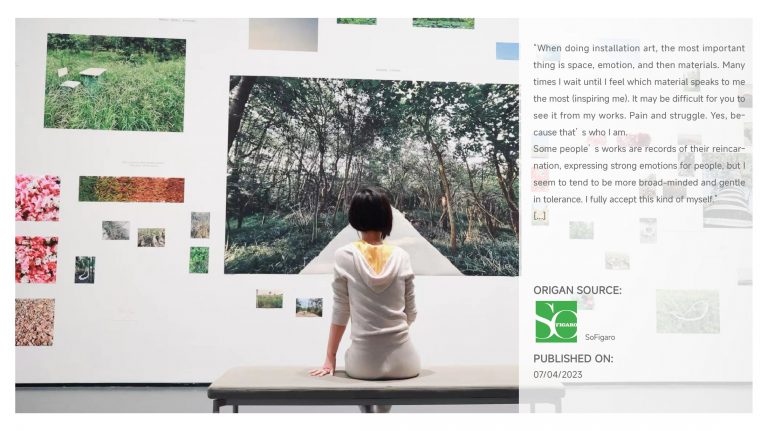How can a city’s past be remembered in the present and the future? Perhaps through monuments, museums and intangible cultural heritage, or in archives, oral histories and ethnographies. ……
But if a city has a visible and intuitive cultural lineage, it is the legacy of its historical architecture. The ancient forms of traditional buildings, the warm materials and the atmosphere of the times surrounding them are the special symbols that evoke the collective memory of the city within the public. As a carrier that can take over the semantics of traditional architectural media, public art is intervening in modern living space with a new and approachable attitude, trying to carry and perpetuate the memories of buildings, places and cities.
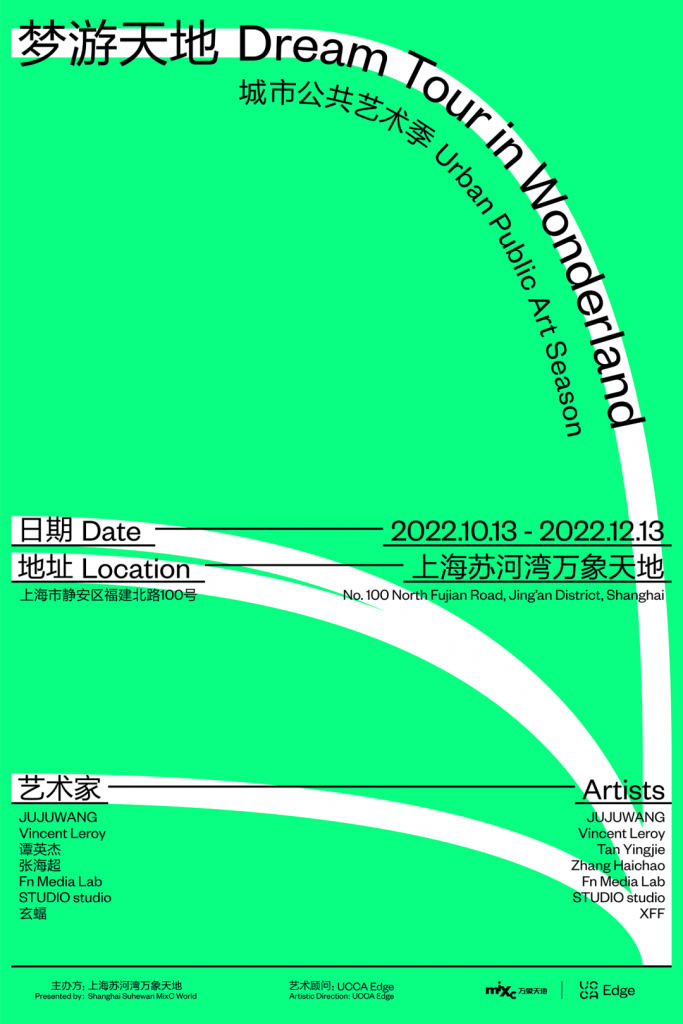
Along the Suzhou River to the north, through the bustling business district, lies the Shanghai Tianhou Palace, which was built in 1884. As a rare site of Tianhou (A-Ma Zu) in Shanghai and one of the important landmarks of old Shanghai, Tianhou Palace used to be a place of great incense and unprecedented scale of worship. With the “relocation” and restoration of the building, we are now once again seeing a part of this traditional and mystical temple standing in front of us, with a modern twist – all kinds of urban public events will take place and be presented in Tianhougong one after another.
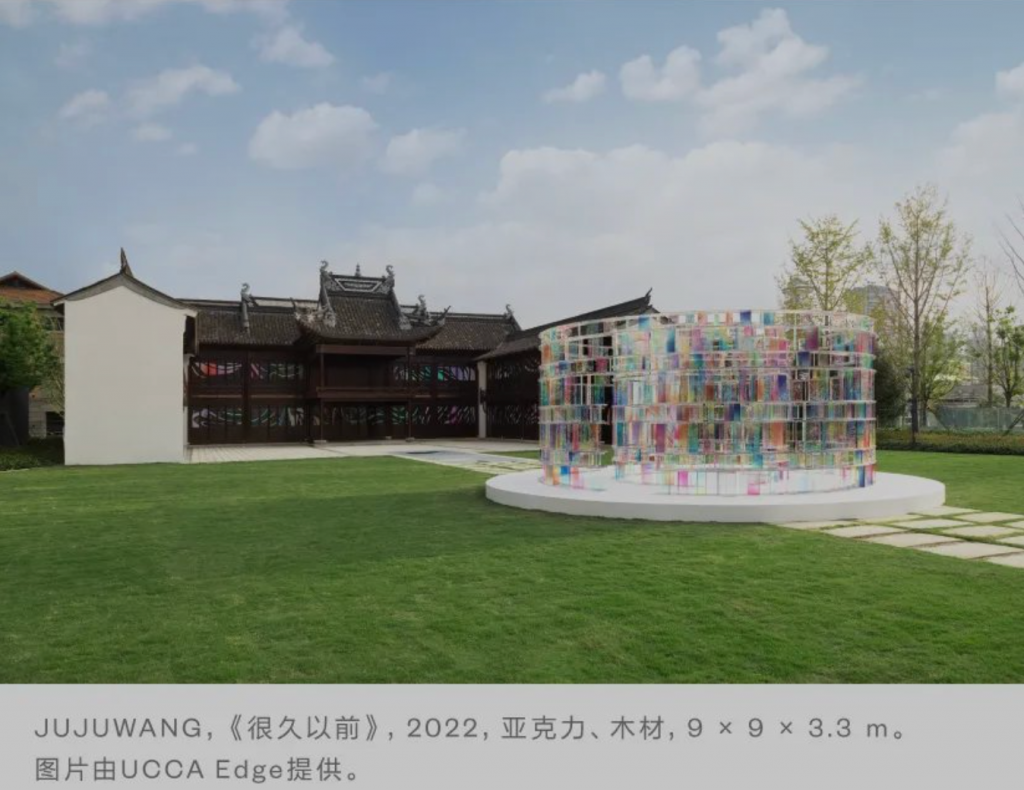
A Long Time Ago” uses acrylic panels suspended and arranged to form two nested circles, reminiscent of the window openings of the old temple behind us, but also resembling two giant pillars. Artist JUJUWANG was inspired to create “Long Time Ago” based on a site visit to Tin Hau Kung’s former location and the calculation of a total of 106 columns in the original building.
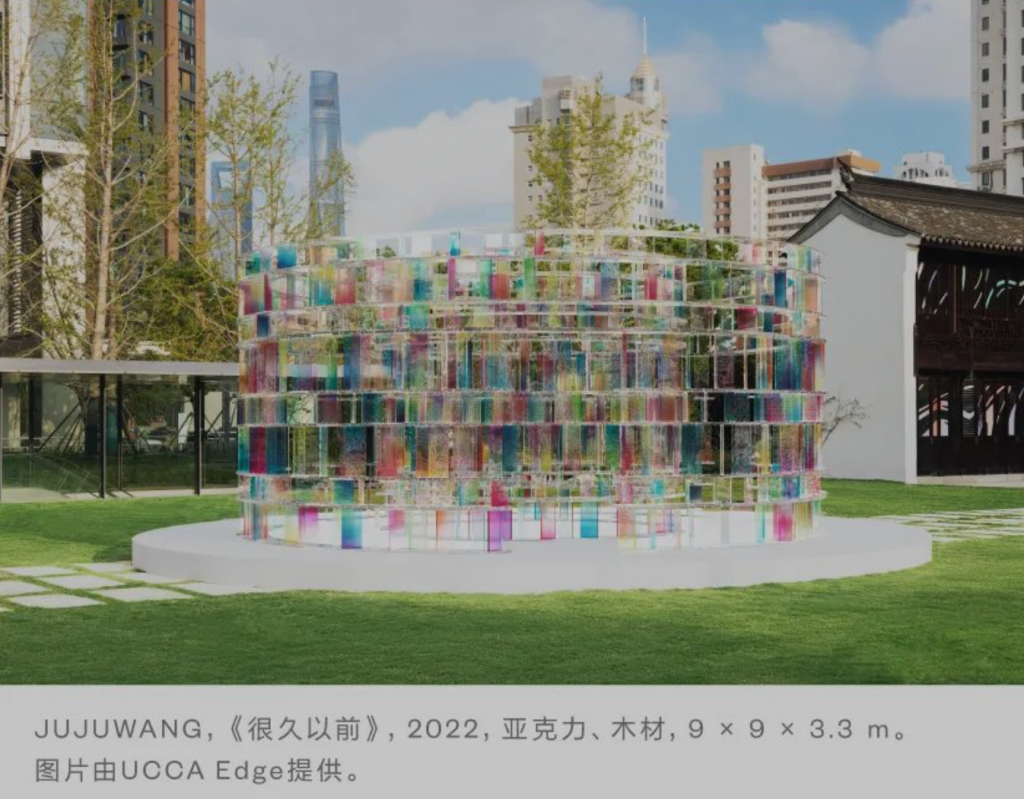
The columnar structure of the installation brings the total number of columns in the original 106 columns in the Tin Hau Temple to a successful total of 108. The artist believes that the number 108 represents perfect harmony and the elimination of worries in many cultures and religions.
Visitors to the venue can use the WeChat app “Dream Journey AR” to view the pillars in the “Disappearing Hall” on their mobile phone screens, experiencing the intersection of time, space and memory, and conveying to the audience the artist’s concept of creating an installation inspired by the pillars of the former Tin Hau Temple. It also conveys to the audience the artist’s idea of creating an installation inspired by the columns of the former Tin Hau Kung Palace, forming a more complete dialogue of time and space between the site where the work is now located and the building that once stood here.
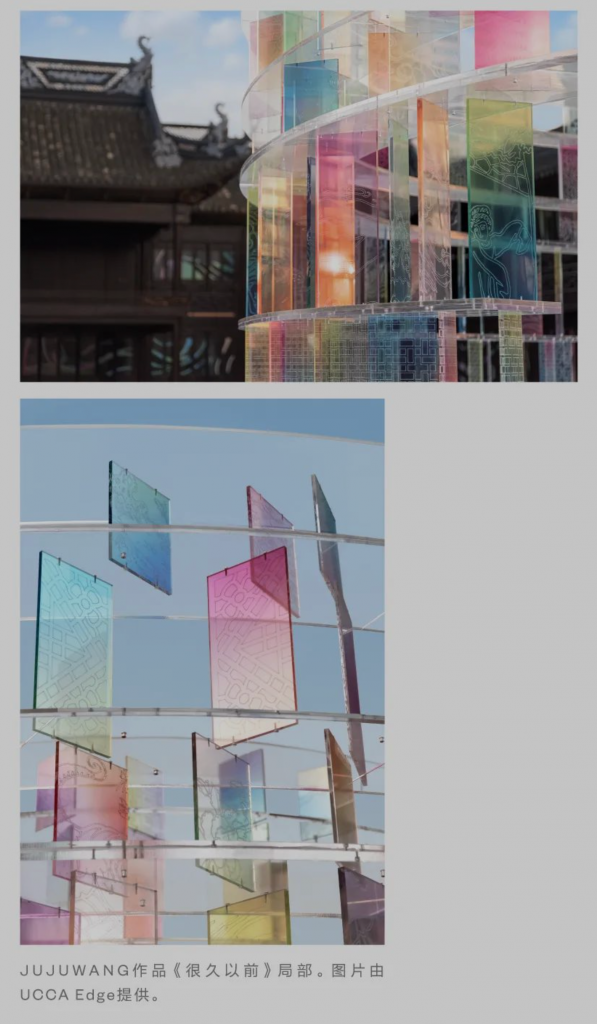
The installation consists of eight tiers, each of which is inlaid with 108 vertical panels of gradient-coloured acrylic, which are delicately carved with skies, landscapes, dragons and phoenixes, palaces, and ancient legends – motifs taken exclusively from wood carvings on the architecture of Tin Hau Temple.

Historically, the Tin Hau of the temple was there to bless those who went out to sea with a safe return, and thus “A Long Time Ago” is a modern-day portrayal of the mysterious life of Tin Hau (A-Ma Zu), who was happy to help others during her short life and continue to protect people in the afterlife.
With the removal of the goddess and the main temple, the only water-related clue left is the algal well. Pieces of wood interlocked with each other to form swirls. This not only shows the building’s relationship with the sea, but also serves as a natural speaker for the theatre below. Ancient Chinese wisdom has been fortunate to survive to this day, so the artist has carefully arranged the panels in a swirling direction, and carefully designed the audience’s movement into the installation, inviting them to enter, touch the history, and savour the beauty of the symbolism.
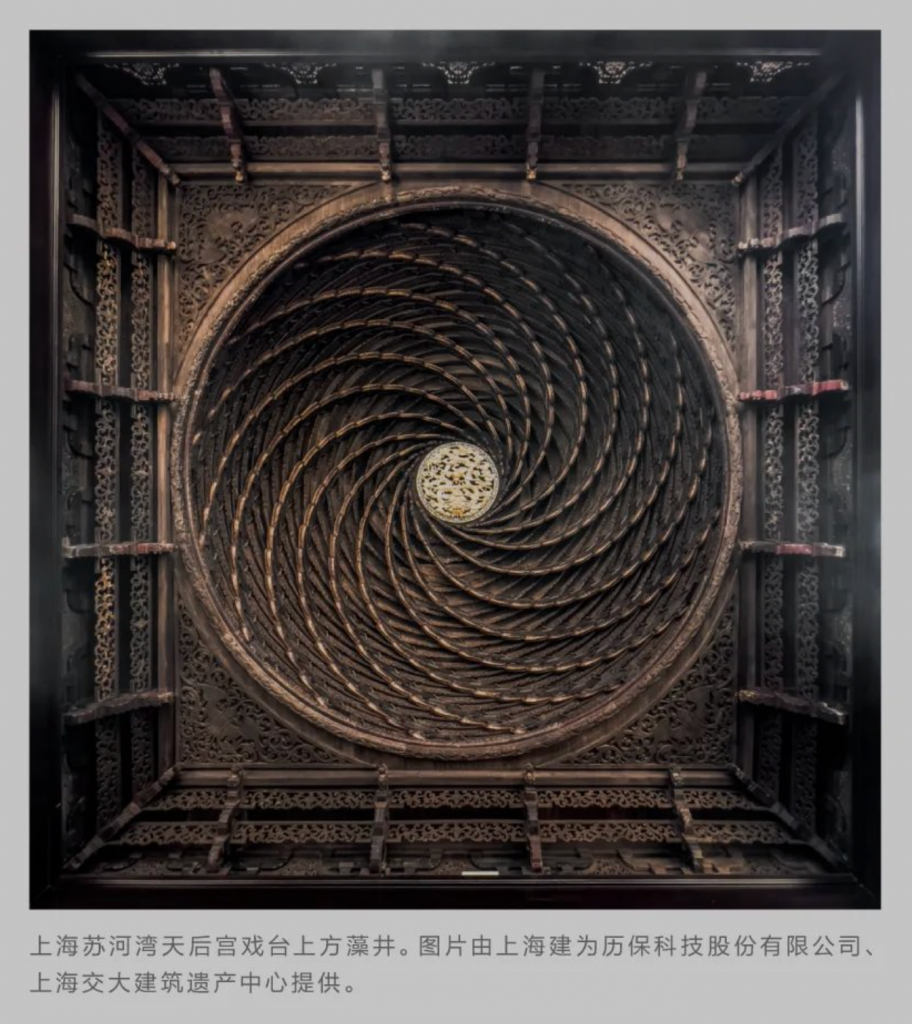
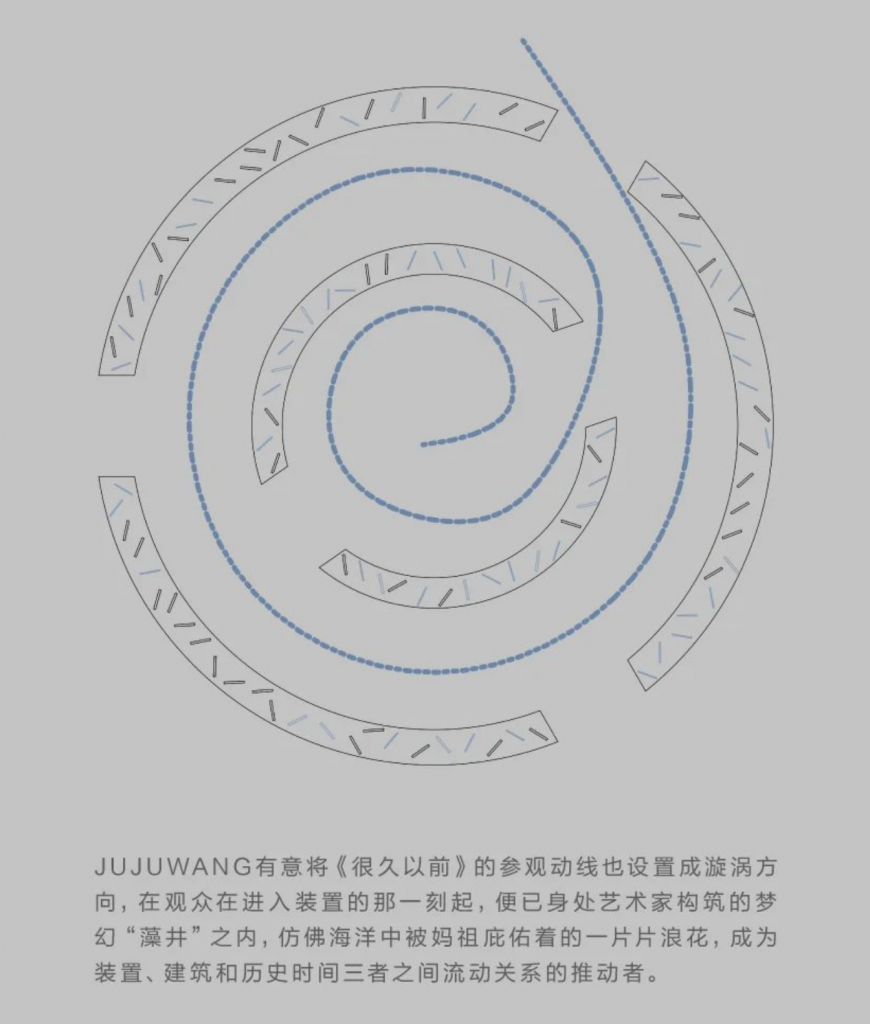
The sunlight carries the walls and silhouettes of the old palace through the exterior of the installation and penetrates into the circle, forming a dream-like space full of mysticism and spiritual power in the vortex “algal wells” constructed by the artist, which are separated from the restored stage of the Tin Hau Temple, but never isolated, and whose inherent spirit is transmitted to the existing palace through the flow of colours and transitions.
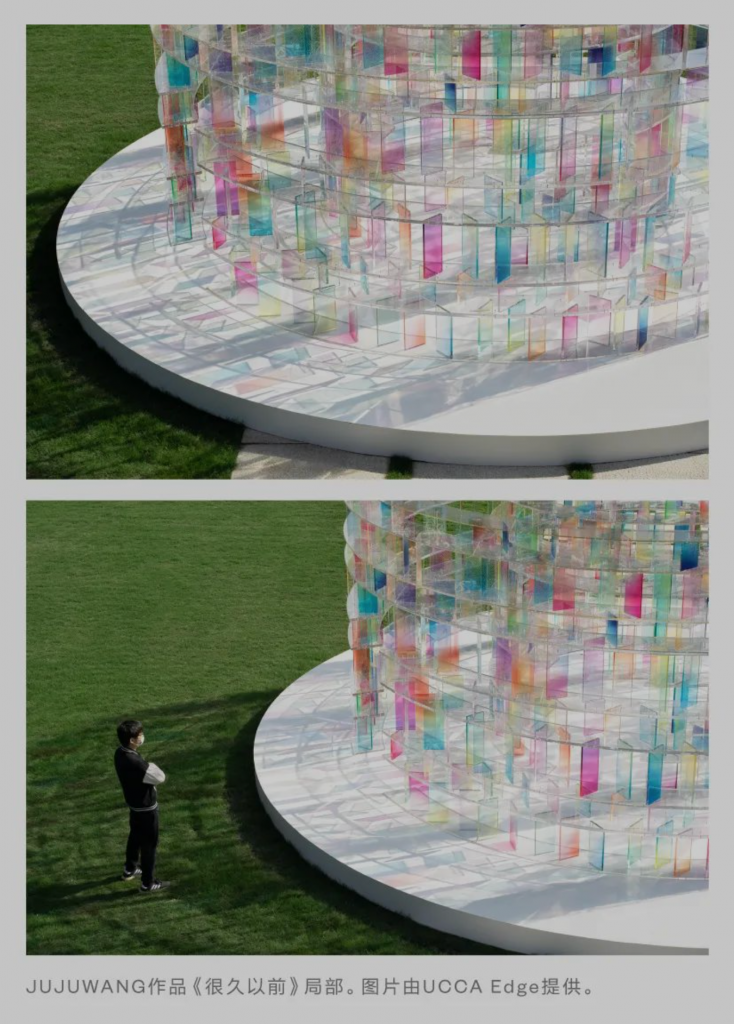
When the artist inspected the site, he found that because of the dark colours of Tin Hau Temple as a whole, it was almost impossible to see the delicate details of the building from afar. When viewed from a distance, it is almost impossible to see the delicate details of the building. When viewed from close up, the restored Tin Hau Temple has indeed perfectly restored the appearance of the past, but things have changed, as the theatre on the first floor has long since disappeared, and the whole building seems to be inevitably covered with a layer of serious tones. In JUJUWANG’s imagination, the Tin Hau Palace of the past was a place full of hope, prosperity, fireworks and a hint of mystery.
Accordingly, JUJUWANG’s watery patches are laid over the latticework of Tian Hou Gong, bringing the palace back to life in a light, modern artistic style, with vibrant colours brightening up the building and highlighting the centrality of the wells. The interior spaces of the palace are illuminated by sunlight, giving them beautiful colours and a dreamy glow.
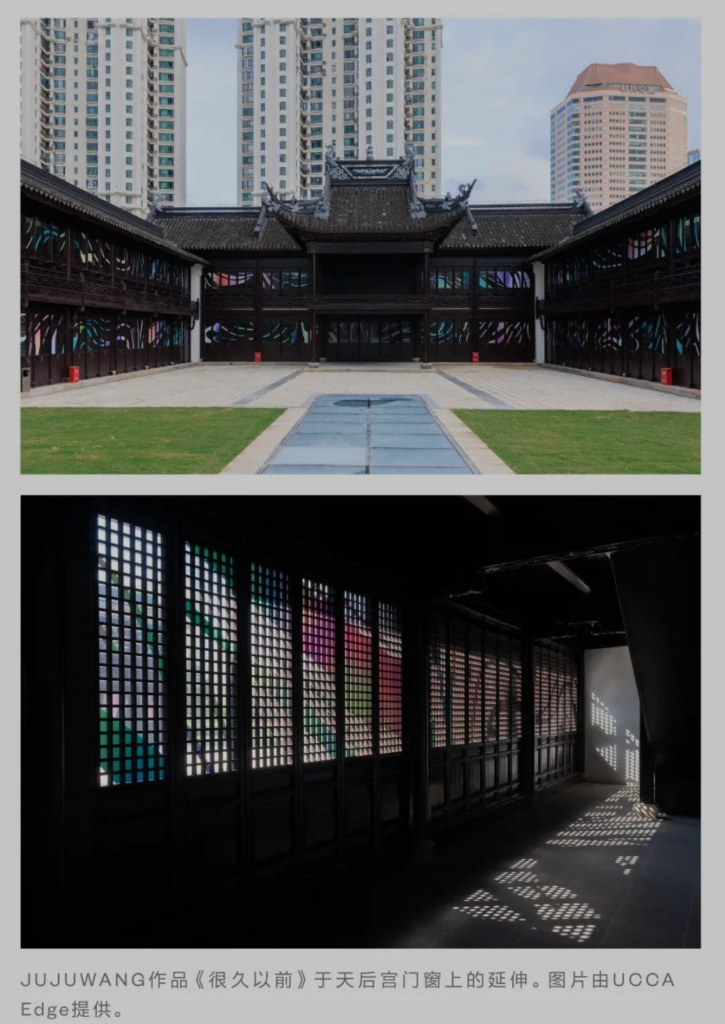
At night, the lights on the stand correspond to the stars. The soft transitional colours from the installation are further “projected” onto the Tin Hau Palace building, forming a waving water shadow that not only brightens the building, but also brings out the spirit, energy and mystery of the palace itself.
On 13th October, the official opening night of the “Dreaming of Heaven and Earth” – Urban Public Art Season, the art group TANTA presented the environmental physical performance “Algae Well” in the mysterious light of the Tin Hau Palace after the night curtains came down, and TANTA used the body as a metaphor for the building, and the physical body and the building were just like a vessel and a spirit. TANTA uses the body as a metaphor for architecture, the relationship between the physical body and the building is like the relationship between “vessel” and “spirit”, the body becomes a temple for spiritual power. The lightness of the dancers’ bodies weaves through the stage, between the doorways, and under the wells of the Tin Hau Palace, where TANTA presents a kind of surging of life, echoing the spiritual colours of the installation A Long Time Ago, which reflects the spiritual colours on the Palace, and the smoke and fire of the former stage of the Tin Hau Palace seems to have resurfaced after being sealed away for a long time.
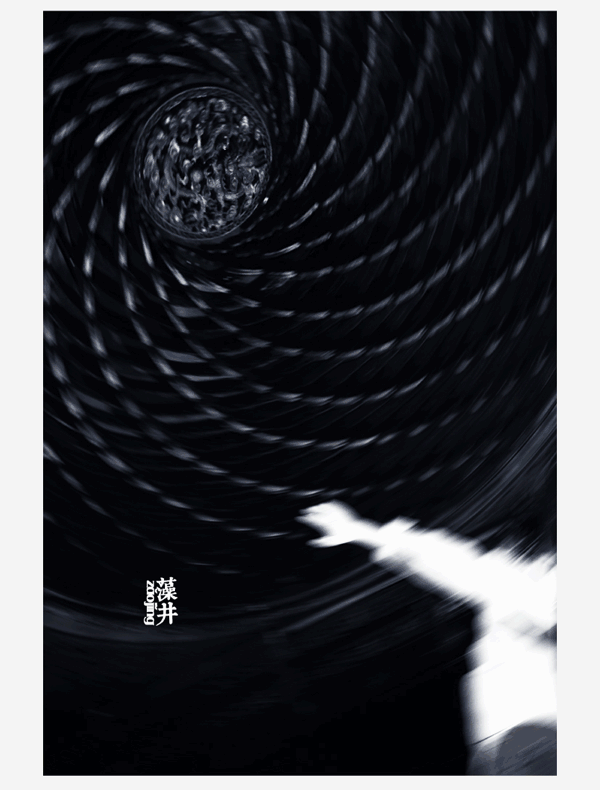
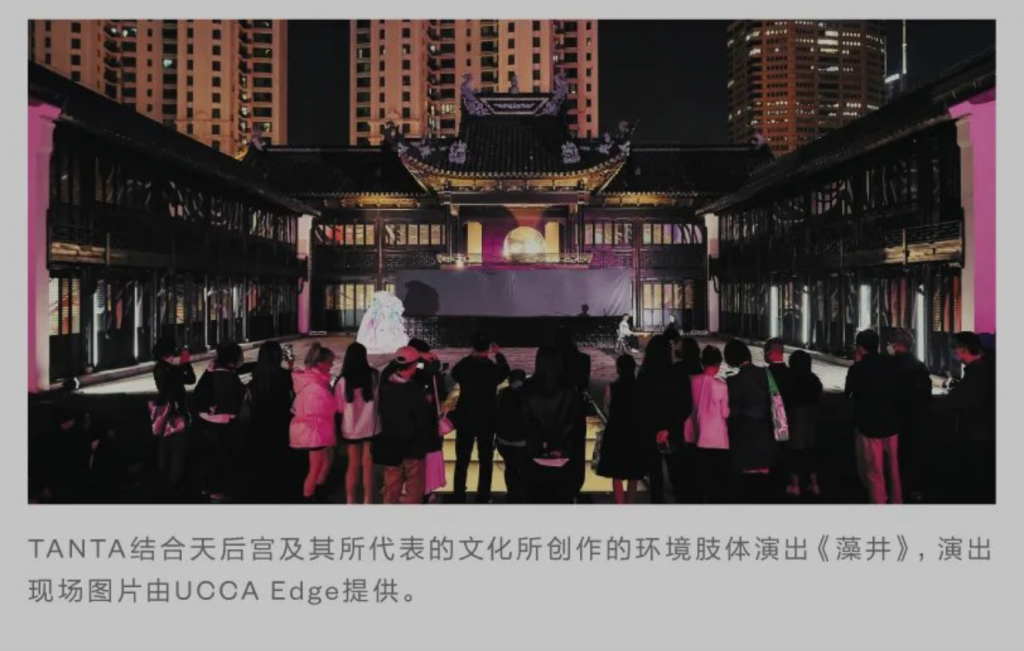
In the flickering light and shadow of the installation and the flowing posture of the dancers, the audience will experience the overlapping of historical time, the convergence of collective memories and individual emotions, and it seems that the pious prayers of the fishermen and the melodious singing of the Youkou artists from a hundred years ago are still dimly reverberating in their ears.
